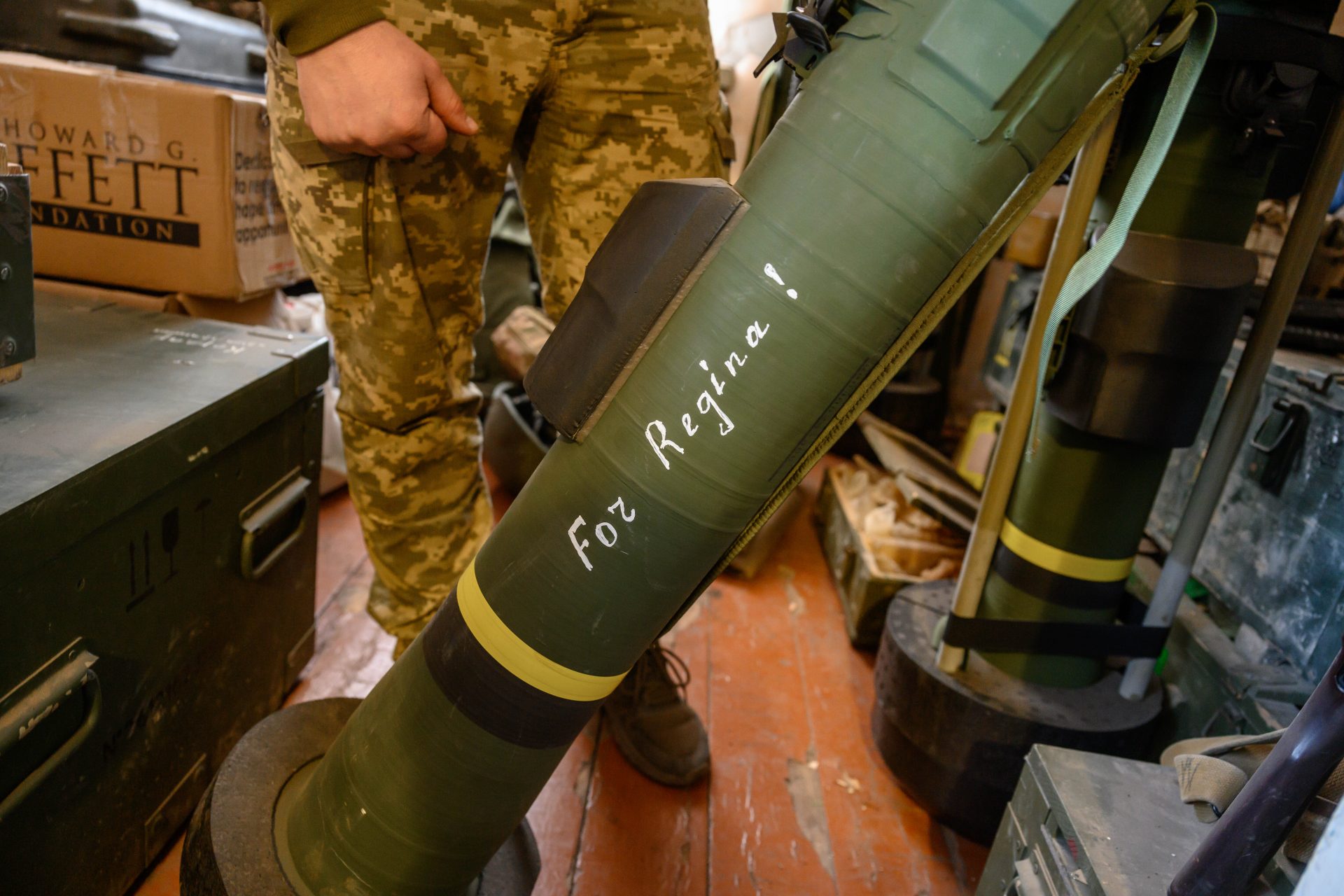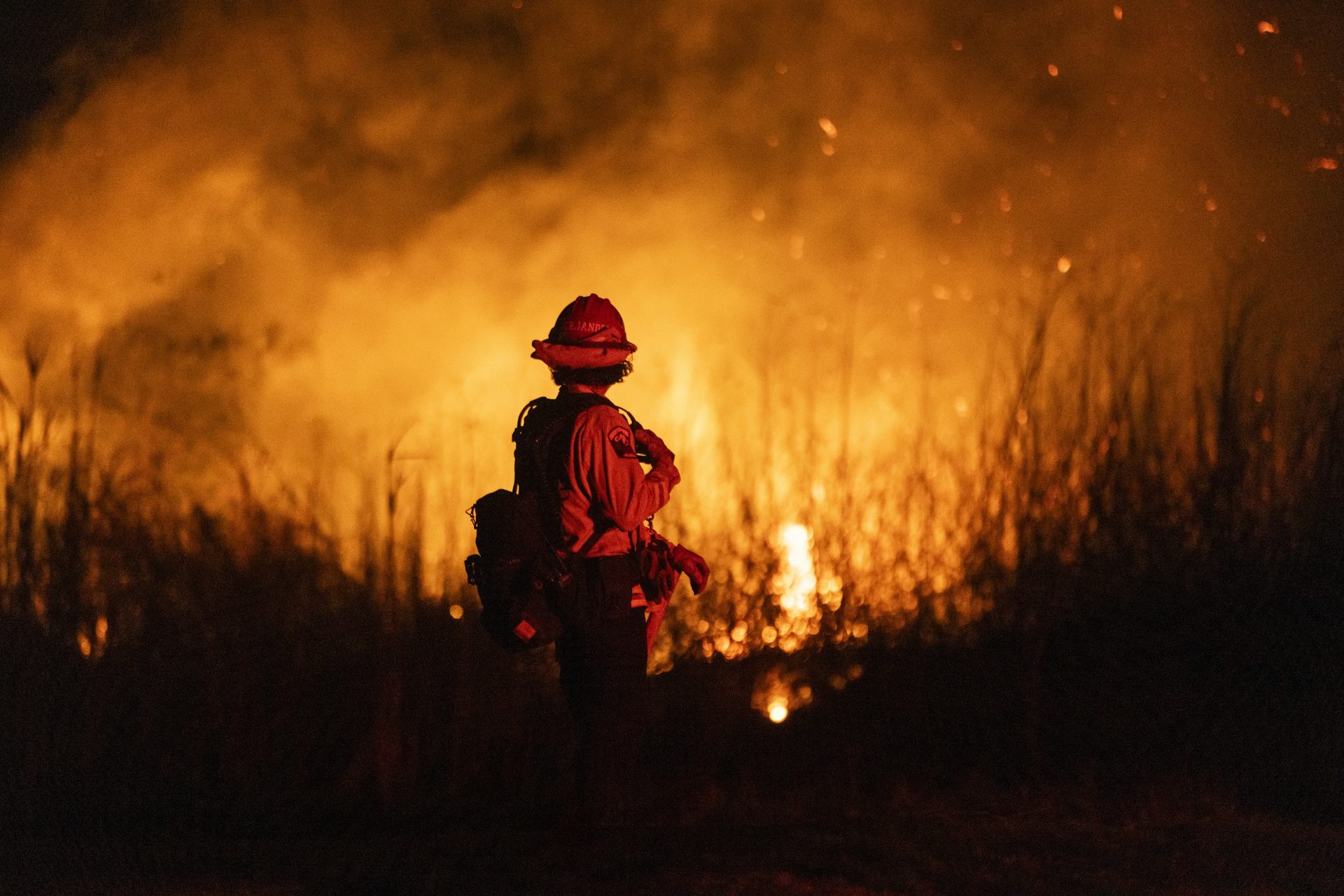Awe-inspiring images from NASA's Webb Telescope
This is an image of a star birth like it's never been seen before. This image taken by the Webb Telescope shows a region containing around 50 young stars, all similar in mass to the sun or smaller, in the nearest star-forming region to us... 390 light-years away.
Image: NASA, ESA, CSA, STScI, Klaus Pontoppidan
This image shows the Orion Bar, part of the Orion Nebula. This image was able to help scientists detect a crucial carbon molecule: methyl cation, for the first time. The molecule is key because it aids in the formation of more complex carbon-based molecules, according to NASA.
Image: ESA/Webb, NASA, CSA, M. Zamani (ESA/Webb), and the PDRs4All ERS Team
This spectacular part of our universe is called the Eagle Nebula, and here it's seen using data from the Webb, Chandra, Hubble, Spitzer, XMM-Newton, and ESO telescopes. "These details evoke an image of yearning cloud creatures at dusk, pointing at something just out of frame," says the image description.
Image: X-ray: Chandra: NASA/CXC/SAO, XMM: ESA/XMM-Newton; IR: JWST: NASA/ESA/CSA/STScI, Spitzer: NASA/JPL/CalTech; Optical: Hubble: NASA/ESA/STScI, ESO; Image Processing: L. Frattare, J. Major, and K. Arcand
The Webb telescope also provided new insight into this "mini Neptune" - a mysterious planet outside of the solar system that was largely impenetrable to previous observations. The planet is fully blanketed by some kind of haze or cloud, suggesting the planet could be a "water world," researchers say.
Image: NASA/JPL-Caltech/R. Hurt (IPAC)
The powerful telescope also captured never-before-seen detail of Cassiopeia A, the remnant of a massive star that exploded about 340 years ago (from our perspective on Earth). The orange part is where ejected material from the exploded star crashes into gas and dust. Scientists still are trying to figure out what's going on in the green part on the right.
Image: NASA, ESA, CSA, D. Milisavljevic (Purdue), T. Temim (Princeton), I. De Looze (Ghent University), with image processing by J. DePasquale (STScI)
Like this one, where we can see a molecular cloud. The international team of astronomers using the James Webb Space Telescope has been able to identify a vast array of frozen molecules, the building blocks of life.
Photo: NASA
This shows the dusty structure of the spiral galaxy and glowing bubbles of gas. If you look closely, you can see three asteroid trails, shown as tiny blue-green-red dots. This galaxy is around 17 million light-years from Earth in the constellation Virgo.
Image: ESA/Webb, NASA & CSA, J. Lee and the PHANGS-JWST Team
In March 2023, the telescope captured a rarely-seen prelude to a supernova. This is a super-bright massive Wolf-Rayet star that the description says is parallel to the transient nature of cherry blossoms. That's because it looks like this only briefly before it explodes!
Image: NASA, ESA, CSA, STScI, Webb ERO Production Team
In this image taken by the James Webb Space Telescope we can see the Southern Ring Nebula. In the second image, on the right, you can see a very bright star right in the center of the nebula.
Photo: NASA
The Pillars of Creation are among the most loved and recognizable 'subjects'. It is not the first image that the Webb telescope has taken of it(we will see another one later), but it is certainly the sharpest ever obtained so far.
Photo: NASA
This incredible photo shows two galaxies merging to form a curious image much like a kidney bean. The lower galaxy has a mostly regular spiral shape, while the upper galaxy is slightly distorted.
Photo: NASA
Behind the curtain of dust and gas in these incredible "cosmic cliffs" are small hidden stars, discovered by the Webb telescope. This is the Carina Nebula in all its glory
Photo: Nasa
Here is another image captured by James Webb: Stephan's Quintet. Here we see five galaxies, four of which interact with each other.
Photo: Nasa
On Monday, July 11, 2022, United States President Joe Biden revealed a preview of the first color image captured by the James Webb Space Telescope, a photo that represents a unique historical moment that could help rewrite the entire history of astronomy and more.
Biden himself on his Twitter channel @POTUS writes: "The first image from the Webb Space Telescope represents a historic moment for science and technology. For astronomy and space exploration. And for America and all humanity."
Photo: Twitter @POTUS
Josef Aschbacher, CEO of ESA, said to the Spanish newspaper 'El Mundo': "Thanks to teamwork, dedication and the human drive to explore and push boundaries, we have reached this historic moment that allowed us to observe the deeper insight into the early universe."
Photo: Nasa
On the official Instagram profile of the ESA (European Space Agency) it is instead described what we can see in the historic photo: "This image of galaxy cluster SMACS 0723 is overflowing with detail: Thousands of galaxies – including the faintest objects ever observed – have appeared in Webb’s view for the first time.2
Photo: Nasa
The image captured by the James Webb telescope was taken in just one day, which is incredibly fast when compared to the legendary Hubble telescope, (to which we owe the last 30 years of discoveries around the universe),which takes a few weeks to produce images.
Photo: Nasa
The Instagram account Nasawebb also gives us a small description of what we saw in the historical photo: "If you held a grain of sand to the sky at arm’s length, that speck is the size of Webb’s view here. Imagine — galaxies galore within a grain! Why do some galaxies appear bent? The combined mass of this galaxy cluster acts as a “gravitational lens,” bending the light rays from more distant galaxies behind it, magnifying them. "
Photo: Instagram @nasawebb
But why is this image taken by the James Webb Space Telescope so important to the entire scientific community? Let's find out!
Photo: Nasa
On December 25, 2021, the James Webb Space Telescope was launched from the Kourou spaceport in French Guiana to kick off a new era in science and technology.
The James Webb telescope was born thanks to the collaboration between NASA, ESA and the Canadian Space Agency. It is the most powerful telescope in the world created by humans to date.
Photo: Nasa
James Webb's task is to discover the secrets of the universe and to answer the many questions that human beings have always asked themselves: "Where do we come from?", "Are we alone in the universe?".
Photo: Nasa
But what everyone expects from the revolutionary telescope is to be able to study the most remote galaxies in the universe, in order to reconstruct the first moments immediately after the Big Bang.
Photo: Nasa
Thanks to the space telescope it will be a bit like traveling back in time to observe the first galaxies that formed. As The Guardian reported, the mission experts have stated that it will be like watching the universe "turn on the lights for the first time". And they added: "Webb can see back in time right after the big bang by looking for galaxies so far away, the light took billions of years to get from them to us."
Although it was launched in 2021, the construction of the prodigious telescope actually dates back to the 1990s, but following many unexpected events, its development was delayed for several decades.
Photo: Nasa
The substantial difference between James Webb and Hubble is that the new space telescope will almost always operate in the infrared to be able to analyze the most remote objects in our universe.
In the photo: the optical difference between the Spitzer Space Telescope, launched in 2003, and Webb.
Photo: Instagram @nasawebb
In addition, the James Webb Space Telescope is equipped with several mirrors that exceed six meters in diameter, which will allow it to study even the faintest objects.
Photo: Nasa
Another difference with Hubble concerns the operation at a distance from the Earth. While that of Hubble is 570 kilometers, for the James Webb Space Telescope it is 1.5 million kilometers.
Photo: Nasa
Looking far into space means looking at the light that came from ancient times, trying to reconstruct the first moments of life of our universe, born about 13 billion years ago.
Photo: Nasa
For this reason, one of the James Webb Teleschope's first goals is to get closer to 'Carina', a nebula that is 7,600 light years away from the Earth, and from which many stars much larger than our sun are born.
Photo: Nasa
Obviously, such an impressive telescope is very expensive: its total price, in fact, is about 11 billion dollars, which was mostly financed by NASA, which has always supported the revolutionary project since its inception.
Photo: Nasa
The latest generation telescope is in fact part of the most ambitious projects carried out by humans, together with the aforementioned Hubble and CERN in Geneva, where the LHC, the most powerful particle accelerator in the world, is located.
Photo: Nasa
Another task of the James Webb Space Teleschope could be to discover new extraterrestrial life or traces of extraterrestrial life that already existed.
Photo: Nasa
What is certain is that whatever kind of discovery the James Webb Space Telescope makes, it will be something that will change our history forever.
Photo: Nasa
More for you
Top Stories

















































